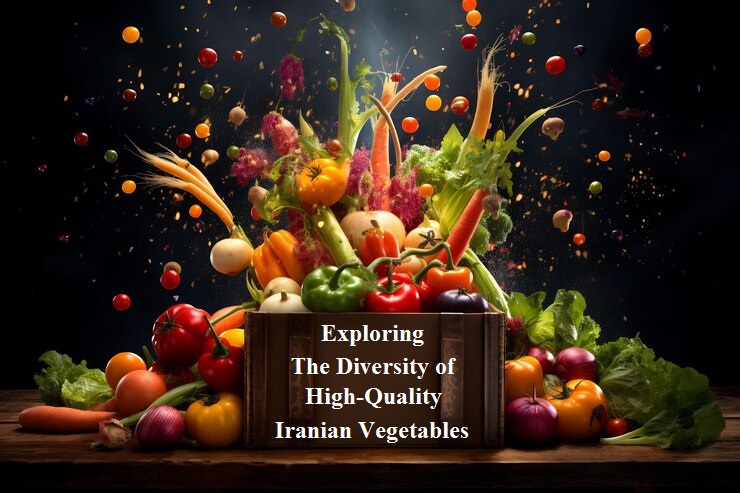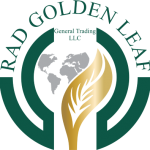Introduction
Iran, with its diverse climates and fertile soils, boasts a treasure trove of high-quality vegetables that contribute to its rich culinary heritage. This article delves into the vibrant tapestry of Iranian vegetables, celebrating their unique flavors, textures, and nutritional benefits. Join us on a journey across the country as we explore specific regions renowned for cultivating exceptional vegetables and unravel the cultural significance woven into the very fabric of these crops.

Types of quality Iranian vegetables and their taste and benefits
Iranian cuisine is celebrated for its focus on fresh, locally sourced ingredients, with vegetables playing a central role in this culinary landscape. The country’s rich agricultural traditions and diverse climate enable the cultivation of a wide array of high-quality vegetables. In Iranian cooking, various vegetables are employed, each distinguished by its unique taste and nutritional benefits. Here we introduce some types of high-quality Iranian vegetables that are used in Iranian cooking for example:
Cabbage: Cabbage is among the foremost vegetables cultivated in Iran, with various types such as red, white, and Brussels sprouts. Rich in vitamin C, fiber, and various antioxidants, cabbage contributes significantly to overall health and It strengthens the immune system, supports bone health and increases digestion
Broccoli: Broccoli, known for its mild and occasionally tangy flavor, excels in cooking applications. Its tender and grainy texture allows it to retain its qualities in various dishes or salads. Nutritionally, broccoli is a source of fiber, vitamin C, and beneficial antioxidants.
Tomato: Tomatoes hold a prominent place in Iranian cuisine, celebrated for their freshness and unique flavor. Packed with vitamin C, lycopene (a powerful antioxidant), and potassium, Iranian tomatoes are widely used in the preparation of numerous dishes and salads.
Cucumber: Cucumber, a refreshing and delectable vegetable, is abundantly cultivated in Iran. With its high water content, cucumber aids in maintaining body hydration and serves as an excellent source of vitamin K, vitamin C, and fiber.
Eggplant: Eggplant, a beloved vegetable in Iranian culture, is rich in vitamin C, vitamin K, fiber, and minerals like potassium and copper. Its distinctive taste enhances the flavor of various dishes across Iranian cuisine.
Onion: Onions, available in yellow, red, and white varieties, boast a soft texture and a spicy or sweet taste. Among the oldest edible vegetables globally and in Iran, onions are a key ingredient in diverse cuisines, offering numerous health benefits. Rich in vitamin C, fiber, and antioxidants, onions support immune system regulation, collagen production for wound healing, and nutrient absorption. Additionally, their antioxidant properties contribute to heart health, making onions a valuable and versatile food with therapeutic potential.
Bell paper: It is a type of sweet pepper from the potato family that can be found in red, yellow, green and orange colors. One of its characteristics is that it is not as hot as other types of pepper. One bell pepper provides 300% of our daily need for vitamin C and provides a large amount of vitamin A and beta-carotene to the body. Therefore, this vegetable is heart and health friendly and anti-aging.
Prominent areas of Iran for growing vegetables
Various regions in Iran are renowned for their expertise in cultivating specific vegetables. Gilan province stands out for its production of tomatoes and cucumbers, with the fertile plains around Shiraz yielding the juiciest tomatoes and cucumbers known for their crunchy texture and sweet taste. Shiraz is also a leading city in onion production, widely used in cooking, salads, or pickles. Kermanshah is famous for its meaty-textured and mild-tasting eggplants, while Isfahan, situated in the heart of Iran, is celebrated for its succulent eggplants.
cultural significance of these crops
Expanding Middle Class Emerging markets often witness a remarkable rise in their middle-class population. This demographic segment typically boasts higher purchasing power and a greater inclination towards consuming fresh and healthy produce, creating a lucrative consumer base.
Urbanization The ongoing process of urbanization in emerging markets leads to notable changes in dietary habits. As people migrate to cities, their access to fresh vegetables and fruits becomes more convenient, thereby generating new opportunities for suppliers and retailers.
Export Potential Emerging markets represent untapped export potential for countries with surplus agricultural produce. Producers can greatly benefit from accessing these markets, expanding their customer base, and diversifying their revenue streams.
Conclusion
Prosperous production and rich variety of high quality vegetable products in Iran shows commitment to quality and not only helps people’s nutritional health, but also acts as a vital element in defining the cultural and culinary identity of Iranian people.
“Rad Golden Leaf General Trading LLC” is a highly respected business focusing on the worldwide export of fruits and vegetables and concurrently participating in the import of raw tobacco materials. The company adheres strictly to global trade principles and is acknowledged for its steadfast dedication to quality and adherence to industry standards. Recognized as a reliable player in the global agricultural and tobacco supply chain, the company’s unwavering commitment to excellence guarantees customers top-tier products and services in both the export and import sectors.
